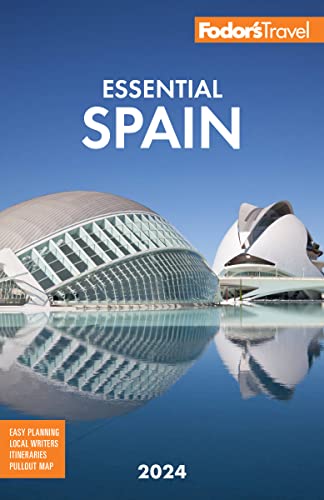Planning Your Time
You can fly into Santiago de Compostela, and a week should be long enough to cover the Santiago area and Galicia's south. From Santiago, you can drive down the PO550 to Cambados, stopping on the way at fishing villages along the Ría de Arousa. If you take the coastal road to Pontevedra, you can spend time there exploring the medieval streets and tapas bars and then drive down to Vigo for a lunch of oysters on Rúa Pescadería. Continue south and arrive before dark at the Baiona parador. Alternatively, travel to A Coruña, and from there head north to some of Spain's loveliest beaches and Viveiro. From here cross into Asturias and spend time in Luarca or Gijón. Another attractive option is getting lost in a small village in the Picos de Europa.
Heading farther east, Santillana del Mar's Renaissance architecture, the Altamira Caves, and the Sardinero Beach at Santander are top spots, while the fishing villages and beaches around Llanes in eastern Asturias, and San Vicente de la Barquera in Cantabria have charming ports and inlets. If you want to delve more deeply into the Picos de Europa and the region's pretty coastline, Asturias and Cantabria merit more than a week's exploration.
Festivals
There's a full calendar of special events in Galicia, including international festivals, major national celebrations, saints' days, and unique local events, some in towns that don't otherwise have much to offer the average traveler.
Carnival. In February and March, on this first major fiesta of the year after Three Kings' Day (January 6), cities, towns, and villages across the region erupt with festive fun, including parades, parties, and wild costumes.
Corpus Christi. During this feast day in June, the town of Ponteareas celebrates flowers and the harvest by carpeting the streets throughout the night with an intricate weave of fresh flowers and leaves, over which a somber parade progresses the following day. Galicia.
El Día de Santiago. Because it's named for the saint, Santiago is a good place to be on his feast day, July 25, celebrated here with processions, street parties, and spectacular fireworks. It is also one of the few days of the year that the enormous botafumeiro is released and swung across the naves of Santiago's cathedral. On July 24, there's a huge fireworks display and a ritual burning of a large pyrotechnic castle, which represents the Gothic facade of the cathedral. Santiago de Compostela, Galicia.
Festa da Arribada. Celebrating the arrival on March 1, 1493, of the news that the New World had been discovered, the town of Baiona stages a spectacular reenactment on the beach, while the streets go medieval with a costumed procession and artisan market. There's plenty of food and entertainment, and the bars are open all day. It's held on the first weekend in March. Baiona, Galicia. www.baiona.org.
Festa do Marisco. Galicia's famous culinary event, held in O Grove in October, draws crowds to feast on a stunning number of seafood delicacies. O Grove, Galicia. www.turismogrove.es.
Festa do Queixo. Food, folklore, and music are the attractions of this cheese festival, held in the first week of March in Arzúa, near A Coruña. 981/500000; 981/815001; www.festadoqueixo.org.
Festa do Viño Albariño. On the first Sunday of August, the town of Cambados, capital of Albariño country, draws thousands to witness its processions, concerts, cultural events, fireworks, and other revelry honoring local vineyards and wineries—including wine tastings from around 40 different Rías Baixas wineries. The festival has been held since the early 1950s. Cambados, Galicia. www.fiestadelalbariño.com.
Festival Internacional Santander. The city of Santander's big event fills up almost all of August with world-class opera, ballet, classical concerts, and recitals, and attracts top international musicians and dancers. Santander, Cantabria. 942/210508; www.festivalsantander.com.
Hogueras de San Juan. On the night of June 23, the skies of A Coruña are alight with hundreds of bonfires, notably along the beach, following a day of parades, colorful costumes, and traditional music and dance. A Coruña, Galicia. 881/990321; www.hoguerassanjuan.com.
La Reconquista. Marking the anniversary of the expulsion of Napoléon's army on March 28, 1809, Vigo re-creates the events and the atmosphere of that day (which earned it the title "faithful, loyal, and courageous") with battle reenactments, townsfolk in costumes, a 19th-century market, street parties, and lots of food and wine.
Nuestra Señora del Rosario. On August 15, sailors and fishermen in Luarca celebrate the Lady of the Rosary by parading their boats and an image of the Virgin through the harbor, in memory of fishermen who died at sea.
Ortigueira Festival. This major Celtic music festival, which takes place in early or mid-July over four days in the coastal city of Ortigueira, attracts folk musicians from around the world. A Coruña, Galicia. 981/422089; www.festivaldeortigueira.com.
Procesión de las Mortajas. This late-September event in A Pobra do Caramiñal (A Coruña) dates back to the 15th century. Thousands of people take to the streets, and survivors of illness, bad luck, or bad love parade around town in gratitude for their salvation, preceded by open coffins carried by their families and friends.
Procesión dos Fachós. Every January 19, the village of Castro Caldelas, in the Ourense province, commemorates its survival of a 1753 cholera outbreak with a torchlight procession. www.turismodeourense.gal.
Semana Santa. Easter and the rest of Holy Week are observed throughout the region with religious services and colorful processions. Viveiro has a barefoot parade of flagellants illuminated by hundreds of candles. Viveiro, Galicia. semanasanta.galiciadigital.com.




